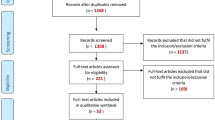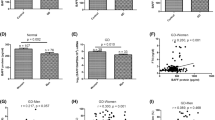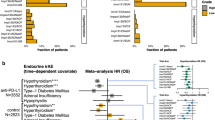Abstract
Graves’ disease (GD) is an autoimmune disease characterized by hyperthyroidism due to the presence of autoantibodies against thyroid-stimulating hormone receptor, which is measured as thyroid-stimulating hormone-binding inhibitory immunoglobulin (TBII). Most of the GD patients are TBII-positive, but TBII is undetectable in a proportion of GD patients. We previously reported the association of HLA-A*02 and -DPB1*0501 with TBII-positive GD, whereas TBII-negative GD showed association with HLA-A*02 and DPB1*0202. Recently, polymorphisms of cytotoxic T-lymphocyte-associated antigen-4 (CTLA4) gene are reported to be associated with GD. In this study, we investigated 329 (240 TBII-positive and 89 TBII-negative) GD patients and 378 controls for the polymorphisms in HLA-A, -DPB1 and CTLA4 (CT60, rs3087243, A/G) to investigate the contribution of these factors in the susceptibility to GD. A significant association with CTLA4 was found for the TBII-positive GD (G carriers in patients vs controls, 97.1 vs 91.8%; odds ratio (OR)=2.97, 95% confidence interval=1.29–6.87, P=0.008), but the association was weak and not significant for the TBII-negative GD (94.4 vs 91.8%; OR=1.50, 95% confidence interval=0.57–3.98, P=0.41). Stratification analyses suggested a possible synergistic interaction of CTLA4 with HLA-A*02 and -DPB1*0501 in the susceptibility to TBII-positive GD.
Similar content being viewed by others
Introduction
Graves’ disease (GD) is a typical organ-specific autoimmune disease affecting thyroid gland, in which autoantibodies against the receptors for thyroid-stimulating hormone induce hyperthyroidism. The autoantibodies has been measured as thyroid-stimulating antibodies (TSAb) by a biological assay or as thyroid-stimulating hormone-binding inhibitory immunoglobulins (TBII) by a solid phase assay.1 Although most of the GD patients are positive for both TBII and TSAb, a proportion of the patients carry low or undetectable level of TBII (TBII-negative GD).2 However, TSAb can be detected in the TBII-negative GD, and it was reported that the TBII-negative patients exhibited mild goiter and followed benign prognosis, implying that the TBII-negative GD might be a clinical subtype different from the ordinary TBII-positive GD.3
Etiological mechanisms of GD are not fully understood, but certain genetic factors should be involved in the pathogenesis because of familial aggregation of the disease.4 To decipher the genetic factors candidate gene approaches have been used, and it is well documented that human leukocyte antigen (HLA) polymorphisms are associated with GD, such that HLA-B*08-DRB1*03-DQA1*05-DQB1*02 haplotype showed strong association in European populations.5, 6 However, the distribution of HLA alleles and haplotypes are quite different in different ethnic groups, and the European GD-associated HLA haplotype is virtually absent in Japanese.7 We previously reported that HLA-A*02 and DPB1*0501 are associated with Japanese GD.8 In addition, we demonstrated that HLA-A*02 and DPB1*0202 showed association with TBII-negative GD, indicating that the TBII-negative GD was different in HLA-linked genetic factors from the TBII-positive GD.9
There are several other genetic factors associated with GD, including polymorphisms in the gene for cytotoxic T-lymphocyte-associated antigen-4 (CTLA4).10 CTLA4 encodes a co-stimulatory molecule of T cells, which is involved in the regulation of T-cell activation,11, 12 and it has been reported that the polymorphisms in exon 1 and 3′-UTR region are associated with GD as well as Hashimoto thyroiditis, another autoimmune thyroid disease, in European and Asian populations.10, 13, 14, 15 However, it is not clear how the CTLA4 and HLA polymorphisms would confer the risk to GD; that is, they operate independently or synergistically in determining the genetic risk. To clarify the issue, we analyzed a CTLA4 polymorphism (rs3087243, also called as CT60) in addition to HLA-A*02, DPB1*0202 and DPB1*0501 in association with GD.
Materials and methods
Subjects
A total of 329 Japanese GD patients (240 TBII-positives and 89 TBII-negatives) and 378 randomly selected Japanese healthy controls were the subjects. The TBII-negative patients were randomly selected from the previously reported 97 patients,9 whereas the TBII-positive patients were those analyzed previously8 (n=142) and newly recruited patients (n=98). The diagnosis of GD and assay for TBII were performed as described previously.2, 3, 9 Blood sample to prepare genomic DNA was obtained from each subject under a given informed consent. The study protocol was approved by the Ethics Reviewing Committee of Medical Research Institute, Tokyo Medical and Dental University.
Genotyping
Detection of HLA-A*02 and HLA-DPB1 genotyping was carried out as described previously.9 The CTLA4 polymorphism (CT60, rs3087243) was analyzed by the PCR-restriction-fragment length polymorphism method using HpyCh4IV.10, 16
Statistical analysis
Frequencies of alleles and genotypes were compared between the patients and controls using χ2-test. Strength of the association was expressed by odds ratio (OR). A stratification analysis was carried as described by Svejgaard and Ryder17 to test the independency or synergistic effects of two different alleles. P-values were corrected for multiple testing by the number of tested markers, HLA-A*02, DPB1*0501, DPB1*0202 and CTLA4-CT60-G (n=4). The association was considered to be significant when the corrected P-value was less than 0.05.
Results and Discussion
Table 1 shows the carrier frequencies of HLA-A*02, -DPB1*0501 and-DPB1*0202 in the studied populations, demonstrating that the frequencies of disease-associated HLA carriers were significantly high in the patients. When the GD patients were divided into TBII-positive and -negative groups, HLA-A*02 and DPB1*0501 were associated with TBII-positive GD, although the association of HLA-A*02 was weak and marginal because it lost the significance after the Bonferroni’s correction for multiple testing. In contrast, HLA-A*02 and DPB1*0202 were significantly associated with TBII-negative GD.
The analysis of a CTLA4 polymorphism CT60 demonstrated that the association with G allele was strong and significant for TBII-positive GD (OR=2.97, 95% confidence interval=1.29–6.87, P=0.031), but it was weak and not significant in TBII-negative GD (OR=1.50, 95% confidence interval=0.57–3.98, P=nonsignificant) (Table 1). Because TSAb can be detected in almost all of TBII-positive GD patients, while only a part of TBII-negative GD patients were positive for TSAb, the observation that the association with CT60-G allele was weak and not significant for the TBII-negative GD might be due to that CT60-G allele was associated with the presence of TSAb. Among the TBII-negative GD patients, 31 (34.8%) were TSAb-positive, whereas TSAb was not detected in the other 58 patients. Frequency of CTLA4-CT60-G carrier was 93.5% in the TSAb-positive patients, whereas it was 94.8% in the TSAb-negative patients. These findings suggested that the CTLA4-CT60-G allele was not associated with the presence of TSAb. We previously reported that the absence of TBII might be a predictor of good prognosis, because the efficacy of medication and the disease-associated HLA-DPB1 allele was different from the typical GD positive for TBII.8 In this study, we also demonstrated that the association with CT60 was weak for TBII-negative GD, implying that the contribution of CTLA4 in the pathogenesis was relatively small in the TBII-negative GD, further supporting that the absence of TBII was a good predictor for prognosis of GD.
We next performed a stratification analysis of three different GD-associated alleles, HLA-A*02, DPB1*0501 and CTLA4-CT60-G, in the TBII-positive GD (Table 2). It was found that the ORs of HLA-DPB1*0501 were 3.28 and 3.30 in the presence and absence of CTLA4-CT60-G, respectively, suggesting that CTLA4-linked genetic factor would increase the HLA-DPB1-linked risk (Table 2b-1, test {3} and {4}). Similarly, ORs of CTLA4-CT60-G were 3.03 and 3.05 in the presence and absence of HLA-DPB1*0501, respectively, showing that HLA-DPB1-linked genetic factor would increase the CTLA4-linked risk (Table 2b-1, test {5} and {6}). In addition, the presence of both HLA-DPB1*0501 and CTLA4-CT60-G conferred OR of 9.99 (Table 2b-1, test {8}), which was much higher than HLA-DPB1*0501 or CTLA4-CT60-G alone (OR=−3.30 or 3.05, Table 2b-1, test {4} or {6}, respectively), although it was not significant because the 95% confidence interval of ORs for each category showed a considerable overlapping as shown in Table 2b-1. These observations suggested a possible synergistic role of HLA-DPB1*0501 and CTLA4-CT60-G in the susceptibility to TBII-positive GD. It was also found that HLA-A*02 and CTLA4-CT60-G conferred a possible synergistic risk, albeit to a less extent, because the presence of both HLA-A*02 and CTLA4-CT60-G conferred OR of 3.75 (Table 2b-2, test {8}), which was much higher than HLA-A*02 or CTLA4-CT60-G alone (OR=1.04 or 2.50, Table 2b-2, test {4} or {6}, respectively), although it was not statistically significant because of the overlapping of 95% confidence interval of ORs (Table 2b-2). Because there is no linkage disequilibrium between HLA-A*02 and DPB1*0501,7 the findings in this study implied a synergistic contribution of HLA-linked factors and CTLA4-linked factor in the susceptibility.
References
Zakarija, M & McKenzie, J M Clinical review 3: the clinical use of thyrotropin receptor antibody measurements. J. Clin. Endocrinol. Metab. 69, 1093–1096 (1989).
Mukuta, T., Tamai, H., Oshima, A., Morita, T., Matsubayashi, S., Fukata, S. et al. Immunological findings and thyroid function of untreated Graves’ disease patients with undetectable TSH-binding inhibitor immunoglobulin. Clin. Endocrinol. (Oxf) 40, 215–219 (1994).
Kawai, K., Tamai, H., Mori, T., Morita, T., Matsubayashi, S., Katayama, S. et al. Thyroid histology of hyperthyroid Graves’ disease with undetectable thyrotropin receptor antibodies. J. Clin. Endocrinol. Metab. 77, 716–719 (1993).
Hemminki, K., Shu, X., Li, X., Ji, J., Sundquist, K. & Sundquist, J. Familial risks for hospitalized Graves’ disease and goiter. Eur. J. Endocrinol. 161, 623–629 (2009).
Reveille, J. D. The genetic basis of autoantibody production. Autoimmun. Rev. 5, 389–398 (2006).
Jacobson, E. M., Huber, A. & Tomer, Y. The HLA gene complex in thyroid autoimmunity: from epidemiology to etiology. J. Autoimmun. 30, 58–62 (2008).
Saito, S., Ota, S., Yamada, E., Inoko, H. & Ota, M. Allele frequencies and haplotypic associations defined by allelic DNA typing at HLA class I and class II loci in the Japanese population. Tissue Antigens 56, 522–529 (2000).
Dong, R. P., Kimura, A., Okubo, R., Shinagawa, H., Tamai, H., Nishimura, Y. et al. HLA-A and DPB1 loci confer susceptibility to Graves’ disease. Hum. Immunol. 35, 165–172 (1992).
Takahashi, M., Yasunami, M., Kubota, S., Tamai, H. & Kimura, A. HLA-DPB1*0202 is associated with a predictor of good prognosis of Graves’ disease in the Japanese. Hum. Immunol. 67, 47–52 (2006).
Ueda, H., Howson, . J M., Esposito, L, Heward, J, Snook, H, Chamberlain, G et al. Association of the T-cell regulatory gene CTLA4 with susceptibility to autoimmune disease. Nature 423, 506–511 (2003).
Scalapino, K. J. & Daikh, D. I. CTLA-4: a key regulatory point in the control of autoimmune disease. Immunol. Rev. 223, 143–155 (2008).
Fife, B. T. & Bluestone, J. A. Control of peripheral T-cell tolerance and autoimmunity via the CTLA-4 and PD-1 pathways. Immunol. Rev. 224, 166–182 (2008).
Kawoura, F. K., Akamizu, T., Awata, T., Ban, Y., Chistiakov, D. A., Frydecka, I. et al. Cytotoxic T-lymphocyte associated antigen 4 gene polymorphisms and autoimmune thyroid disease: a meta-analysis. J. Clin. Endocrinol. Metab. 92, 3162–3170 (2007).
Ban, Y., Tozaki, T., Taniyama, M., Tomita, M. & Ban, Y. Association of a CTLA-4 3′ untranslated region (CT60) single nucleotide polymorphism with autoimmune thyroid disease in the Japanese population. Autoimmunity 38, 151–153 (2005).
Furugaki, K., Shirasawa, S., Ishikawa, N., Ito, K., Ito, K., & Kubota, S. Association of the T-cell regulatory gene CTLA4 with Graves’ disease and autoimmune thyroid disease in the Japanese. J. Hum. Genet. 49, 166–168 (2004).
Downie-Doyle, S., Bayat, N., Rischmueller, M. & Lester, S. Influence of CTLA4 haplotypes on susceptibility and some extraglandular manifestations in primary Sjögren's syndrome. Arthritis Rheum. 54, 2434–2440 (2006).
Svejgaard, A. & Ryder, L. P. HLA and disease associations: detecting the strongest association. Tissue Antigens 43, 18–27 (1994).
Acknowledgements
We thank Drs Hajime Tamai, Sumihisa Kubota, and Michio Yasunami for their contributions in the blood sampling and HLA typing study. This study was supported in part by Grant-in-Aid for Scientific Research from the Ministry of Education, Culture, Sports, Science and Technology of Japan, and research grants from the Ministry of Health, Labour and Welfare, Japan.
Author information
Authors and Affiliations
Corresponding author
Rights and permissions
About this article
Cite this article
Takahashi, M., Kimura, A. HLA and CTLA4 polymorphisms may confer a synergistic risk in the susceptibility to Graves’ disease. J Hum Genet 55, 323–326 (2010). https://doi.org/10.1038/jhg.2010.20
Received:
Revised:
Accepted:
Published:
Issue Date:
DOI: https://doi.org/10.1038/jhg.2010.20
Keywords
This article is cited by
-
Correlation between CTLA-4 and CD40 gene polymorphisms and their interaction in graves’ disease in a Chinese Han population
BMC Medical Genetics (2018)
-
Analysis of DLA-DQB1 and polymorphisms in CTLA4 in Cocker spaniels affected with immune-mediated haemolytic anaemia
Canine Genetics and Epidemiology (2015)



